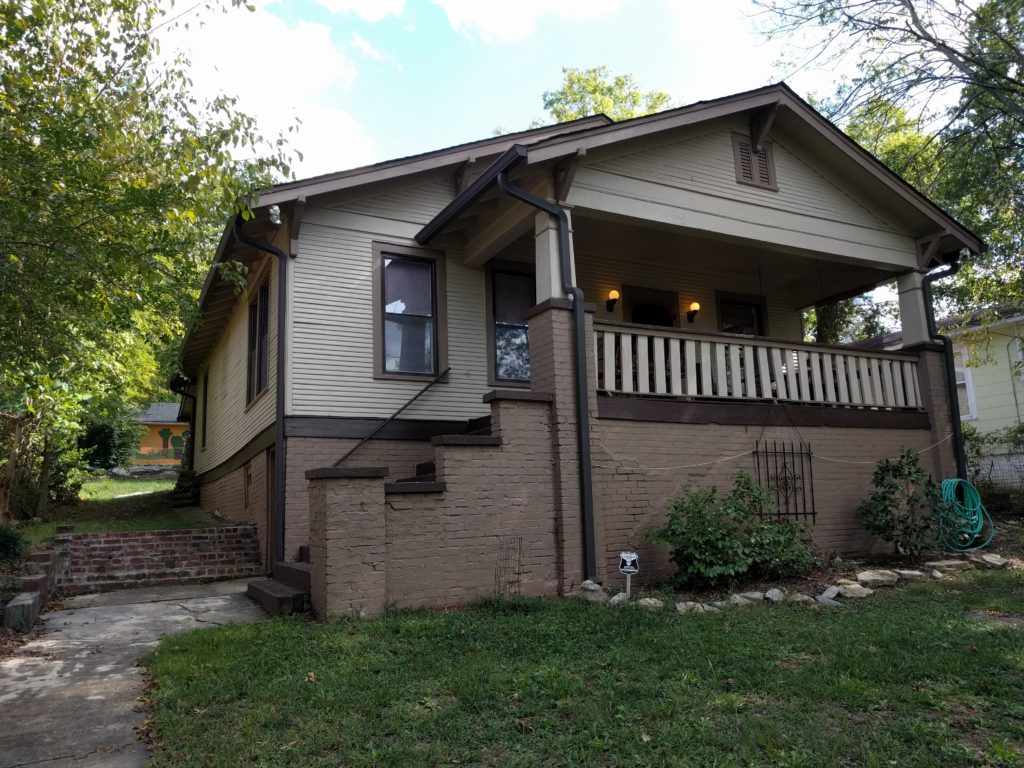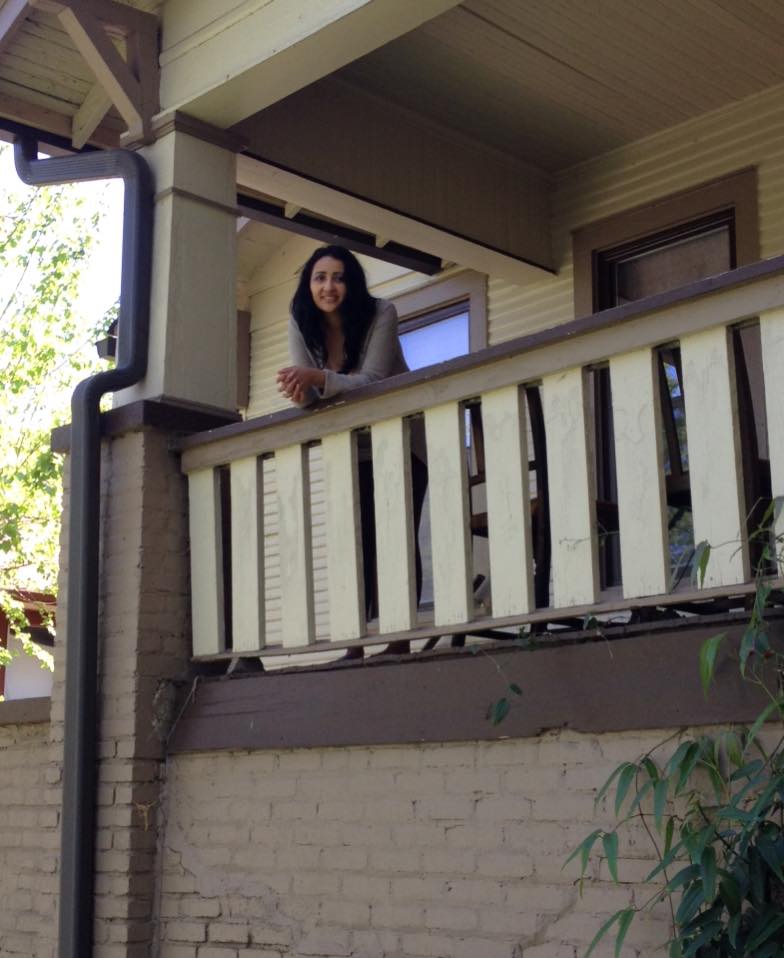This week, I scoured the city for foreclosures. If you’ve ever attempted this, you know it’s a bit of a shady scavenger hunt. A lot of driving around and slowing down, questionable inspecting from outside (if presumed empty), and walking boundaries. As usual, I interacted with neighbors to learn more about the houses. This time, I happened to be met with pretty direct questions: “Can I help you? Who are you looking for?” The wealthier or more gentrified the neighborhood, the stronger the suspicion.
With the recent tragedies of #georgefloyd and #amycooper, I couldn’t help but wonder this week: if I was a black man hunting for foreclosures, would these neighbors have bothered to question me directly—or just called the police, iPhone in one hand and craft beer in the other? I realized in that moment that even the ability to build my housing business stems from privilege. I can wander around abandoned property, unconsciously trusting my whiteness will help me explain my way through the situation to neighbors or police should the need arise. Unsurprisingly, one black friend admitted he wouldn’t be caught dead attempting this kind of shopping spree. If he wants to build wealth through real estate, he’ll find bargains another way.
Don’t get me wrong. I’ve hustled to create and refine my unique business niche. From lawyer offices to plumbing breaks to learning how to clear title, I’ve done my time. The fact that I’m white doesn’t mean I haven’t struggled or worked hard to succeed; it just means that my race and ethnicity haven’t been one of the barriers to success I’ve faced. And because I don’t have to think much about my race in the process, it’s tempting to conclude that no one else does, either. When systems work well for you, it’s hard to see when they don’t work well for others. (Hint: that’s why folks are protesting this week).

All of this takes me back to buying my first house. I remember sitting in the historic title company across from the courthouse. The smell of paperwork and church coffee wafted through the high ceilings of the ancient building. As the closing went on, I became increasingly surprised at the mounds of documents and signatures required to purchase one simple asset. Attached to the large file of papers with assessments and comparables, inspections and lead-based paint disclosures was a former deed to the property. Among the covenants and restrictions dating back to the 1940s when the house was built was this one: Said property shall not be sold, leased, or rented to any person other than of Caucasian race.
I read it again several times. There it was, in black and white. On a property I was buying. I felt my throat tighten. Ignorant of real American history, warm anger and disgust brewed in my 27 year old body. Finally, I questioned the title attorney about it.
“Oh, well…” he stammered, “of course that’s null and void now” he chuckled nervously, quickly waving it off and changing the subject.

Racism has roots in this land. In housing, those roots go deep.
In the The Color of Law, Richard Rothstein unpacks policy decisions passed by our state and federal governments over the past 100 years that promoted patterns of discrimination in housing that have enshrined racial inequality in the US to this day.
The same decade my house was built, the Supreme Court ruled in Shelley vs. Kraemer (1948) to prohibit exclusion of African Americans or other minorities from buying property in sections of cities formerly forbidden. Kraemer, a St. Louis white man who lived ten blocks down, sued in an attempt to prevent the Shelleys from gaining possession of a property they’d purchased. The court decided that private parties can create such restrictive racial agreements, but that state judicial enforcement of them was discriminatory. Through this semi-victory, you can see how race-based housing patterns proved hard to root out.
Around the same time, African Americans and other minorities returning from World War II found the GI Bill’s low-cost mortgages and low-interest loans and financial support made overwhelmingly available only to their white counterparts. Fast forward a couple decades to the Vietnam War. Even as African-American and Hispanic members of the armed forces sacrificed their lives for the country, their loved ones back on American soil were still barred from purchasing homes in certain residential areas because of their race and ethnicity. This is a big deal, because homeownership has been one of the most powerful ways Americans have built and passed on wealth in our recent history.

Finally, the Civil Rights era brought the Fair Housing Act of 1968 which outlawed discrimination surrounding the sale, rental and financing of housing based on race or national origin. But the damage had already been done. Robust systems of affluence and disenfranchisement were set in stone.
For white folks like me who were born into the benefits of this housing system, D.L. Mayfield reminds us of how blinding this can become:
“The deep and dark tragedy of affluence is how it takes away curiosity; how it accepts the world as it is. How it conforms to the talking points of empire and pharaohs. It keeps us from wondering why people of color tend to live in concentrated urban areas with a lack of services; why white folks flock to the suburbs on the backs of subsidies—and then back to the cities when it later becomes profitable. Or why our cities remain segregated by class and race.
Affluence hears all of the statistics and then looks around at its own neighborhood. ‘Everything seems to be going okay. Everything seems to be working out. It must have been all that hard work. It must have been deserved.’ To be curious about any other answer is to open wide the door of responsibility, of kinship, of strings that connect our well-being to the well-being of everyone else.”
You can tell I’m not a historian, but getting curious about my inheritance in America’s housing history has helped put today’s racial frustrations into context. But even with this data, that curiosity doesn’t come easy. If you’re a white American like me, you can accept these historical facts and still struggle to believe that structural racism exists today. Many of us were taught to recognize racism only in personal prejudice toward someone of another skin color, and not in these created systems that generationally favor some groups and marginalize others. From policing to housing to incarceration, we can’t afford to be in denial about systemic racism any longer. It’s not going to just go away. Since the day that brown bodies were brought to this land as enslaved peoples, we’ve enshrined it as one of our original sins as a nation.
Today is the day to lift the blinders of affluence and look truth in the eyes, raw and unsettling. Today is the day to get curious. When our brothers and sisters of color tell a different American story than the one we’ve experienced, today is the day we must learn to listen.

P. S. If you’re keen to take steps toward repairing the damage caused by economic and racial inequality in your city, check out Homegrow a Housing Business For the Greater Good. In this toolkit, I share my unique model for creating a profitable small business that empowers people who have been marginalized to flourish through homeownership.


Wow. Excellently written. Thank you so much for this post. I have felt the same way as I identify abandoned houses and peruse through the neighborhood thinking how sketchy I must look and yet how much more that would be amplified if my skin was a different colour. Thank you for the example in housing as well, that picture was helpful. I hear about this so often with more subtle data examples. However, this example was so clear and helpful to me, someone who hasn’t been personally oppressed by systemic racism.